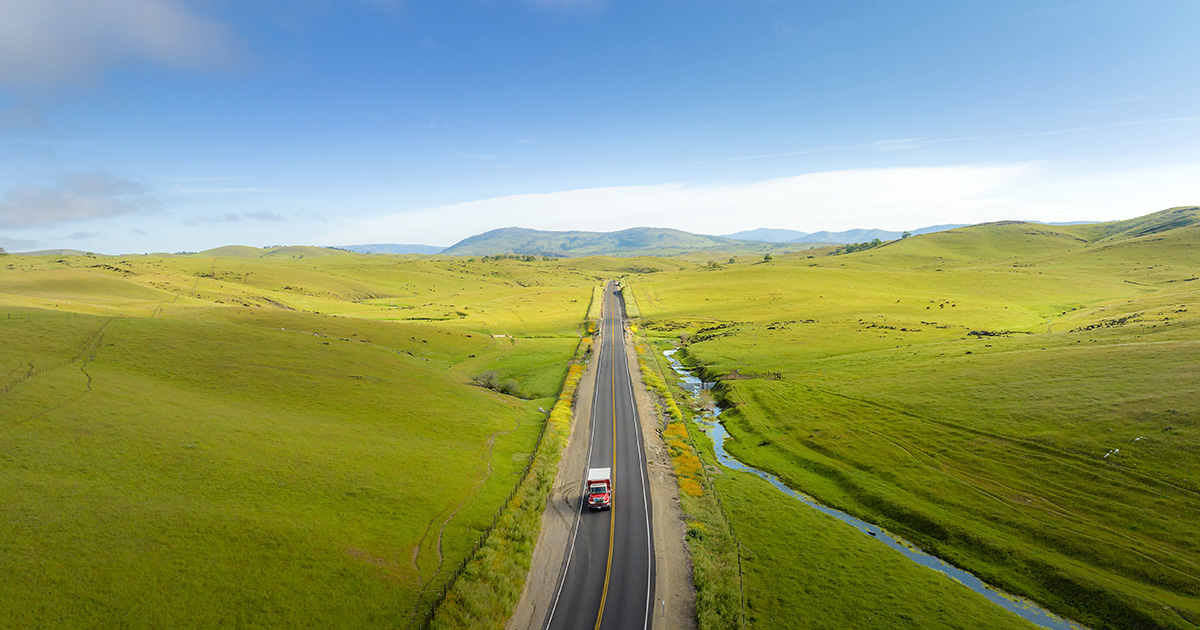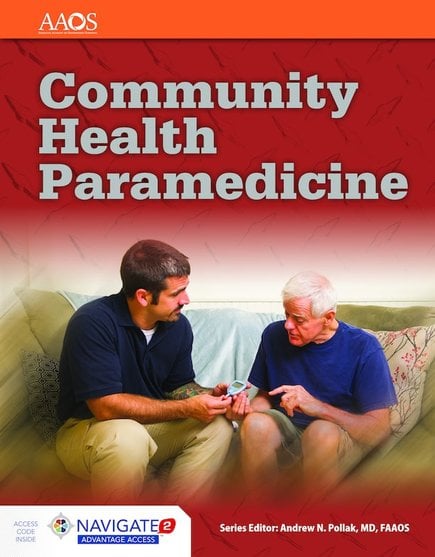EMS Issues in Rural Areas

In one of my part-time (seasonal) medic positions, I was a part of a team at a ski mountain assigned to the medical services area. We supplemented the team of experienced and highly dedicated ski patrollers who were out on the mountain. Often, especially during icy conditions, skiers/boarders (customers) would fall and “tweak” their knees or fracture a leg, forearm and/or shoulders. Collisions, due to out-of-control customers, usually involved higher speeds and more significant injury patterns. Helmets were required for children but not always worn by adults. Ski Patrol brought patients down the mountain on a taboggan to us, or they simply walked into Medical Services.
Most of the injured were assessed, cleaned up, or warmed up. Injuries were cared for, and all were given appropriate advice for medical follow-up. We spent a lot of time finding a friend or family member who could drive the patient back home or to a local hospital. When needed, we had access to a physician, often out skiing, who could be called in to medical services to provide additional expert assessment, management, and advice to patients. In the absence of an X-ray the treatment was limited. If the patient had a serious injury, we had an ALS ambulance crew on standby for transportation to the hospital.
Occasionally, critical patients were taken to a nearby landing zone for Medevac transport to the Trauma Center. It was rare they would go by land ambulance to the Trauma Center due to the travel distance when weather conditions were good. Being in the mountains during the winter involved frequent snowstorms that had an impact on land transport times. Low ceiling, high winds, and snowstorms usually meant Medevac transport was not an option.
Often our customers were up visiting the area from suburban communities where they had the luxury of a less than 30-minute transport to a specialty care center (Trauma, Stroke, Cardiac, etc.). When they chose to explore the remote areas of the state, the last thing on their mind was, “what if I was involved in an accident and needed care provided in a specialty care center?”
I enjoyed the experiences, working and training with all the great patrollers, EMS team members, and physicians. Having worked in urban EMS for most of my medic career, I learned a lot about the unique issues in the rural environment.
I remember one Christmas Eve when we needed to transport a child who had an obviously broken leg at the end of the day to a hospital about 90 minutes away in a snowstorm. The usual hospital we would have transported to had no orthopedics available due to the holiday week and it was obvious this child was going to need surgery. The weather limited availability of a Medevac as it was snowing too heavily. By the time we arrived at the hospital ED, the shift who knew we were coming had changed and the incoming shift was upset we transported to their ED instead of going straight to the Trauma Center.
One of the biggest frustrations EMTs and medics who work on an ambulance in an urban area is the ambulance congestion once they arrive at the ED, those transporting from rural areas are faced with different concerns. Lessons I learned years ago about providing EMS services in rural locations still today seem to be characterized by:
Low Population Density: Limited hospitals to transport to.
Limited Healthcare Infrastructure: Few hospitals, clinics and EMS stations. Specialty care is often not available (ie: Trauma, Stroke, Cardiac, Burns, OBS, Pediatrics).
Longer Response and Transport Times: Fewer roads, and often only one way over that mountain which may be closed in ice storms. It takes longer to travel further distances to reach patients and reach the hospital. Austere weather has serious implications for patient destinations.
Poor Communications: Networks are often unreliable unless you are very close to the hospital. Radios do not work in all areas of the territory, cellular is unreliable, and wall-to-wall internet is an illusion.
Limited Resources and EMS Personnel: Fewer ambulances and trained personnel to backfill when the primary ambulance was out on an assignment. Often a small group of very dedicated volunteers holding everything together. Mutual aid agreements and relationships are very important to daily operations.
Limited Physicians: The number of physicians per 10,000 people is 13.1 in rural areas compared to 31.2 in urban setting. The number of specialists per 100,000 people is 30 in rural areas compared to 263 in urban settings. The population 65 or older is 18% in rural areas compared to 12% in urban communities.
Limited Traditional Face-to-Face Training: Although great strides have been made in the post-pandemic period with remote and hybrid training, there are still very limited numbers of qualified instructors and training centers. Just try to get a CPR card!
Limited finances are an ongoing issue, especially in the rural areas.
What is a Rural Community?
Approximately 20% of the U.S. population (65 million people) live in a rural area. However, how the term “rural” is defined depends on who is doing the defining. There are two commonly used definitions of “rural” areas used by federal agencies:
The U.S. Census Bureau defines rural areas as all geographic areas that are not classified as urban. These areas include 97% of the total land area of the USA. Thus, urban areas are either: urbanized (containing 50,000 or more people) or urban clusters (with at least 2,500 people by fewer than 50,000).
The Office of Management and Budget (OMB) designates counties as metropolitan or micropolitan collectively known as core-based statistical areas. The counties that do not fall into one of these categories are classified as “outside metropolitan and micropolitan statistical areas.” A metropolitan area is one or more counties with at least one core urbanized area of at least 50,000 people as well as adjacent counties that through commuting patterns are highly integrated economically and socially with the central county. OMB also delineated ‘micropolitan” statistical areas with one urban cluster of at least 10,000 but fewer than 50,000 residents as well as the adjacent counties integrated socially and economically with the core county through commuting patterns.
When you hear the term “Super Rural,” used by CMS, think frontier, wilderness, or remote.
The key is to use the rural-urban definition that fits the questions you are looking to answer. If the research question is about policy analysis tracking urbanization and the impact on local grown produce, the Census Bureau definition would be best to use. Studies designed to track economic and social changes, such as grants for additional resources for rural health would use the OMB metro-nonmetro classification.
Since a lot of the needs of rural health and rural EMS are resources, the Centers for Medicare and Medicaid (CMS) utilize the OMB classifications. Why is this discussion particularly important to rural areas? Consider these stats: In rural areas, Medicaid covers 1 in 4 adults (a higher share than in urban areas). In rural areas, Medicaid covers nearly half of all births and one fifth of inpatient discharges.
Causes of Death in Rural Communities
According to the CDC, the five leading causes of death in the U.S. are more likely to impact rural counties. In 1999, the death rate in rural areas was 7% higher than in urban areas; by 2019, it was 20% higher. Researchers did an analysis of data from the National Vital Statistics System to calculate the percentages of preventable early deaths (excluding COVID-19) for people under 80 years old during the period 2010 to 2022. They found the rates of early death from heart disease, cancer, unintentional injury, chronic lower respiratory disease, and stroke are higher in rural counties than in urban counties.
Motor Vehicle Crashes
Urban and rural areas have fundamentally different characteristics with regard to density of road networks, land use and travel patterns. Consequently, the characteristics of fatal motor vehicle crashes differ between rural and urban areas. For example, pedestrian and bicyclist deaths and deaths at intersections are more prevalent in urban areas, whereas a larger proportion of large truck occupant deaths and deaths on high-speed roads occur in rural areas. According to Federal Highway Administration, 31% of the vehicle miles traveled occur in rural areas yet 41% of crash deaths occur there.
Recent Legislation
In the One Big Beautiful Bill Act (OBBBA) (Public Law #119-21), an additional $50 billion, over a 5-year period, has been designated to establish the Rural Health Transformation (RHT) Program.
The Program has five strategic goals, grounded in the statutorily approved uses of funds:
Improve Health Conditions: Support rural health innovations and new access points to promote preventative health and address root causes of diseases.
Sustainable Success: Help rural providers become long-term access points for care by improving efficiency and sustainability.
Workforce Development: Attract and retain a highly skilled health care workforce by strengthening recruitment and retention of health care providers in rural communities.
Innovative Care: Spark the growth of innovative care models to improve health outcomes, coordinate care, and promote flexible care arrangements.
Tech Innovation: Foster use of innovative technologies that promote efficient care delivery, data security, and access to digital health tools by rural facilities, providers, and patients.
NAEMT has collaborated with the Page, Wolfberg, & Worth (PWW) Advisory Group to do an excellent analysis of the major provisions of the OBBBA and how they may impact EMS. I suggest you take the time to look at this document so your service leadership can be prepared for upcoming changes:
In Summary: Your Role
What are some of the things that you can teach emergency responders and healthcare providers to help reduce the risk of death in their rural communities?
Screening for hypertension.
Increased cancer prevention and early detection.
Encouraging physical activity and healthy eating.
Promoting smoking cessation.
Promoting motor vehicle safety (seatbelts, drive sober, no distractions).
Practicing safe opioid prescribing (beware fake pills).
Seriously consider the need for Mobile Integrated Healthcare – Community Paramedicine within your rural community.
Staying up to date on grants and best practices for rural communities.
Becoming active in your professional association’s advocacy efforts to help rural communities.
And as always, be careful out there!
References
https://www.cdc.gov/rural-health/media/pdfs/2024/09/leading-causes-death-newsletter-article-508.pdf
https://www.ers.usda.gov/topics/rural-economy-population/rural-classifications/what-is-rural
https://www.iihs.org/research-areas/fatality-statistics/detail/urban-rural-comparison
García MC, Rossen LM, Matthews K, et al. Preventable Premature Deaths from the Five Leading Causes of Death in Nonmetropolitan and Metropolitan Counties, United States, 2010–2022. MMWR Surveill Summ 2024;73(No. SS-2):1–11. DOI: http://dx.doi.org/10.15585/mmwr.ss7302a1
About the Author
Bob Elling, MPA, Paramedic (retired) – has been a career paramedic, educator, author, and EMS advocate for 5 decades. He was a paramedic with the Town of Colonie EMS Department, Albany Times Union Center, and Whiteface Mountain Medical Services. He was also an Albany Medical Center Clinical Instructor at the HVCC Paramedic Program. Bob served as AHA National/Regional Faculty and participated in many successful life-saving legislative campaigns with the You’re the Cure Network. Bob served as paramedic and lieutenant for New York City EMS, a paramedic program director, and associate director of New York State EMS Bureau. He has authored hundreds of articles, videos, Blogs, and textbooks to prepare EMS providers for their career. Bob is the ECSI Medical Editor for the CPR and First Aid Series, Co-Author of EVOS-2, and Co-Lead Editor of Nancy Caroline’s Emergency Care in the Streets.
Community Health Paramedicine
Community Health Paramedicine prepares experienced paramedics to expand their role within their existing scope of practice, including assisting the primary care physician in providing preventive patient care and establishing a successful therapeutic relationship with the patient.
Request More Information
